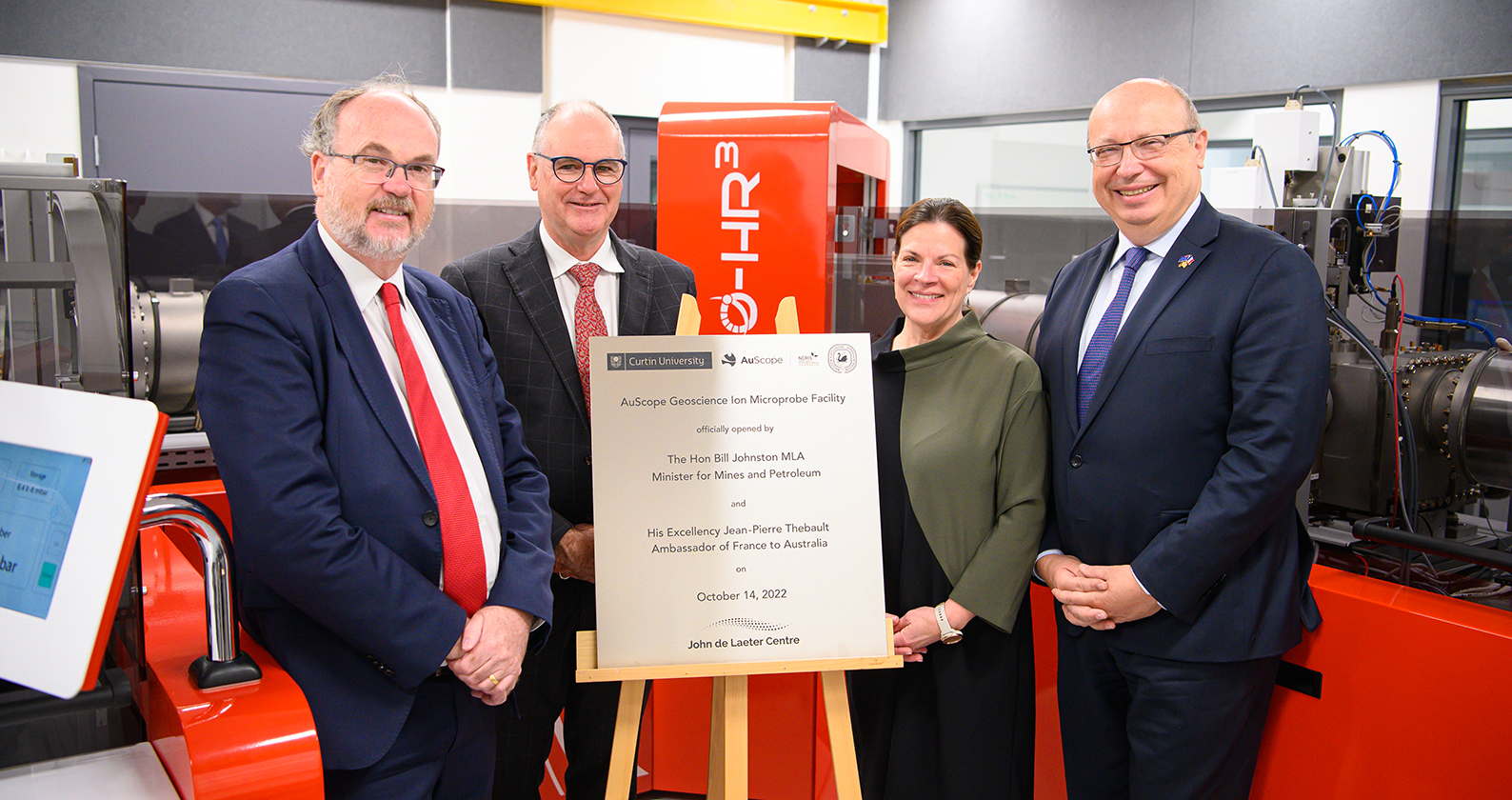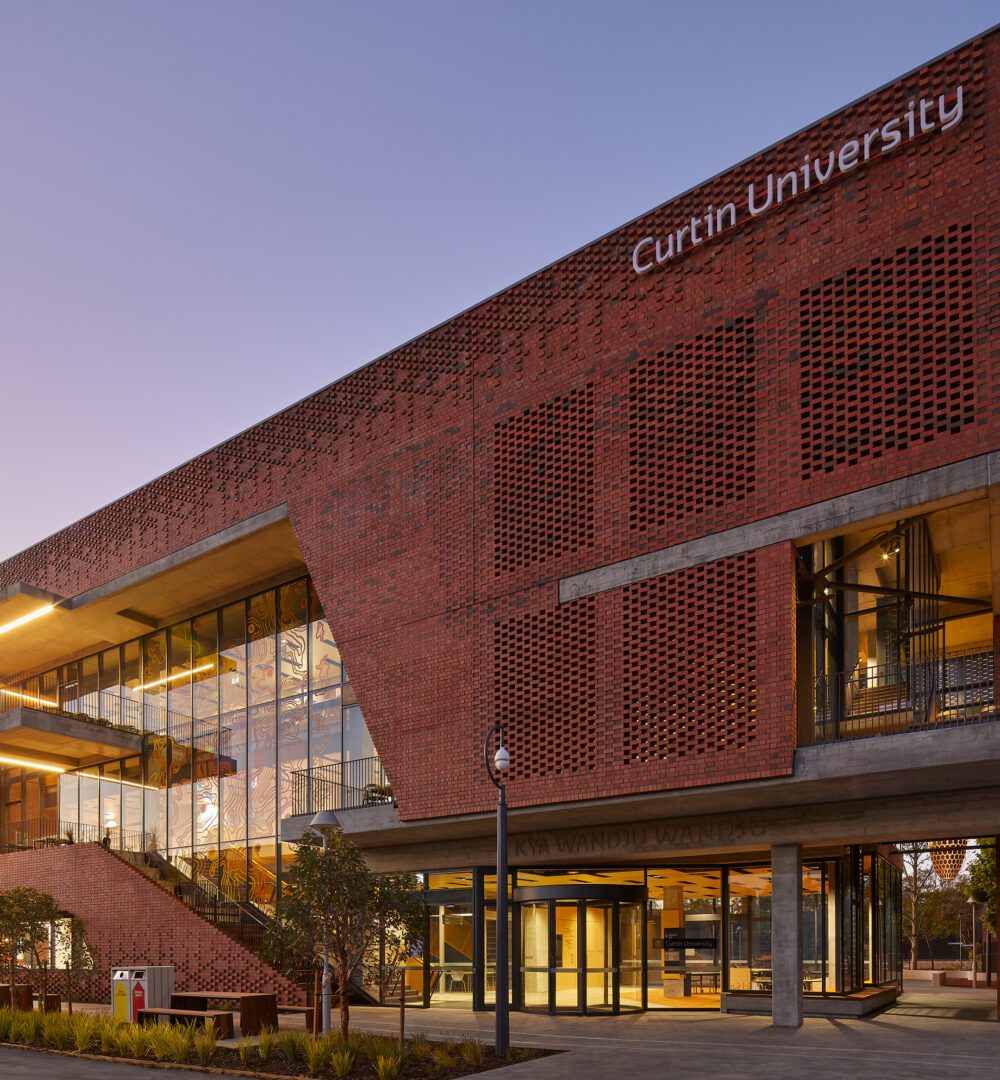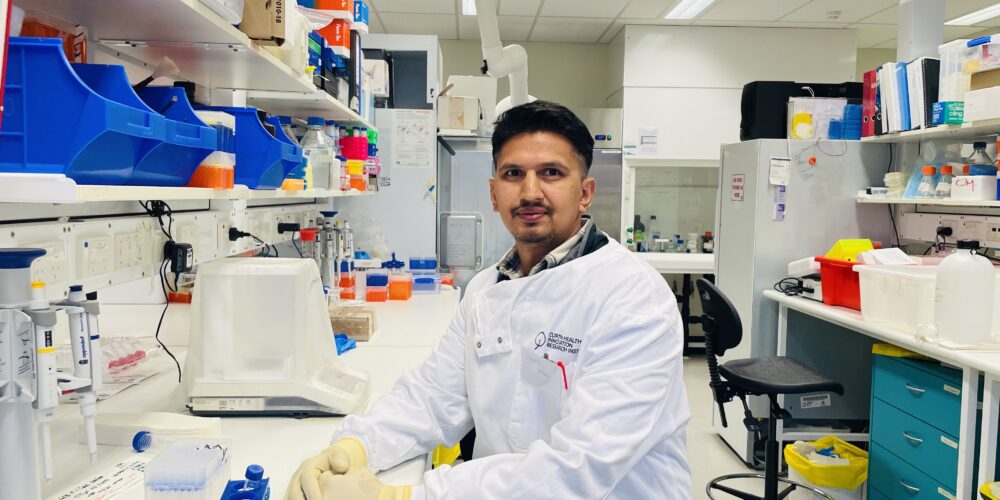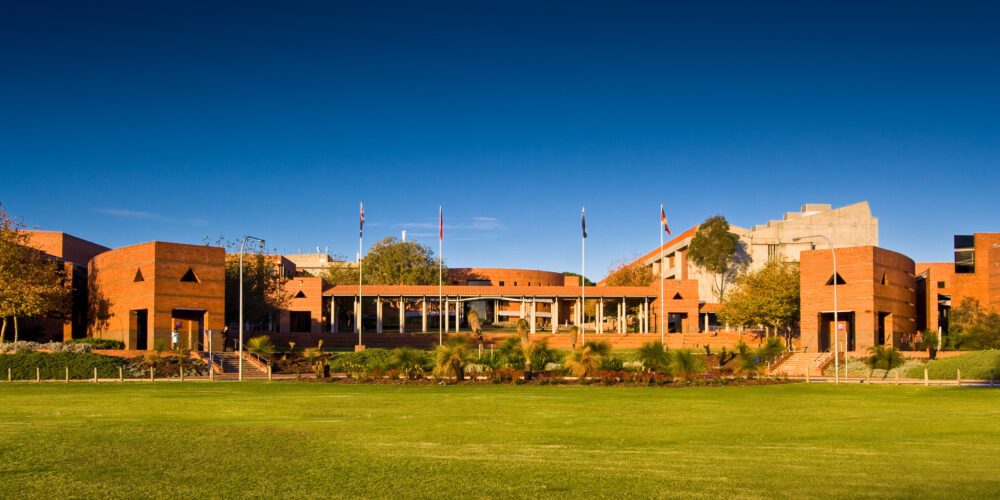World-class research instrument takes up new home at Curtin

Curtin University is home to a new state-of-the-art instrument which will provide researchers and industry with access to world-class microanalytical infrastructure to help discover the next generation of critical mineral resources and unravel the mysteries of the universe.
The French-built CAMECA 1300HR3 secondary ion mass spectrometry instrument forms the core of the new AuScope Geoscience Ion Microprobe Facility, launched by the Ambassador of France to Australia, H.E. Mr Jean-Pierre Thébault and Mines and Petroleum Minister Bill Johnston MLA. The instrument is the first to be deployed in Australia and in the Southern Hemisphere and is one of only five installed around the world.
The $10.7 million research project, hosted in a new National Collaborative Research Infrastructure Strategy (NCRIS) Flagship Facility at Curtin’s John de Laeter Research Centre, will carry out high-precision measurements of the isotopic composition of chemical elements in materials at the micrometre scale.
Curtin University Vice-Chancellor Professor Harlene Hayne said the new AuScope Geoscience Ion Microprobe will support important research, government, academic and industry collaborations to ensure Curtin remains at the forefront of science.
“This new instrument will be used by Earth scientists to determine the composition and evolution of the Australian continent, mineral deposits and surface materials, and will support space scientists to analyse meteorites discovered in the Australian outback and asteroid fragments recovered during international deep space missions,” Professor Hayne said.
“The new instrument will be used by researchers from the Curtin Space Science and Technology Centre to analyse rare and unique asteroid samples returned to Earth via the Hayabusa2 and Osiris-Rex deep-space missions.
“Curtin is delighted to host this important piece of infrastructure which will play a huge role in ensuring our researchers are partnering with industry and government to conduct world-leading research in the fields of geoscience, planetary science and climate change.”
John de Laeter Centre Director Professor Brent McInnes said the new CAMECA instrument is replacing Curtin’s 29-year-old Sensitive High-Resolution Ion Microprobe (SHRIMP).
“We are thrilled that Curtin has been entrusted by AuScope and the Geological Survey of Western Australia to operate and manage this incredibly advanced piece of technology which will support researchers across Australia to make major breakthroughs in their respective fields,” Professor McInnes said.
“The previous SHRIMP instrument played an important role in many successful geoscience and planetary science research projects at Curtin, including the discovery of the oldest minerals on the Earth, Moon and Mars. We are so excited to see what discoveries we can achieve next.”
The research infrastructure project was funded by the Australian Department of Education, Skills and Employment, National Collaborative Research Infrastructure Strategy (NCRIS) Program (via AuScope), the WA Department of Mines, Industry, Regulation and Safety (via Geological Survey of WA) and Curtin University.



